In the ever-advancing world of Digital Marketing, you might have often come across the phrases, ‘Be where your customers are’ or ‘Go where your customers are.’ However, let me warn you right there—simply being or going where your customers are wouldn’t be enough!
Managing the online presence of a brand goes beyond keeping the business active on Facebook — regular posts, new product launches, replying to customer queries and doubts, behind-the-scenes footage and promotional ads.
It goes without saying that you have to connect on a different level than usual, with your potential and existing customers in order to delight them.
That doesn’t mean that you have to keep chatting with your customers, 24/7. Sometimes, just listening could be more than enough.
In today's digital age, social media platforms serve as more than just spaces for networking and sharing content. They have become invaluable tools for businesses seeking to understand their audience, engage with customers, and shape their marketing strategies.
Among these platforms, Facebook stands out not only as a social network but also as a powerful hub for social listening—the practice of monitoring online conversations to gain insights into consumer preferences, trends, and sentiments.
What is Social Listening on Facebook?
If you go around reading each and every customer comment or text you receive on Facebook, it would definitely become overwhelming at some point. God forbid if you're a big brand, your social media team will probably never go to sleep.
If you're a smaller brand with a smaller team, then there will be a lot of work that will be cut out for your brand managers.
This is where the Facebook social listening comes into the picture and becomes the saving grace for the digital marketers all around the world.
Facebook listening involves analyzing all the information available on Facebook, including comments, recommendations, and private messages, to identify trends and insights. It's an active examination of the data collected passively from user interactions.
This process provides businesses with a deeper understanding of how customers perceive their brand (brand perception) and helps shape future business strategy and marketing campaigns.
Contrary to directly responding to individual private messages, Facebook listening entails recognizing patterns, such as receiving multiple private messages from different users about the same topic.
Businesses can then relay this information to the relevant department for action. It's akin to having a bird's-eye view of all interactions, filtering out outliers and focusing on the most common issues to address them effectively.
By monitoring conversations, comments, and interactions, businesses can gain a deeper understanding of their target audience and market trends, allowing them to make more informed decisions.
What is Facebook Listening API?
Facebook Listening API is a powerful tool that allows developers and businesses to access and analyze public social listening data from posts, comments, mentions, and other data across the Facebook platform. This API enables businesses to perform social listening at scale, gaining valuable insights into consumer sentiment, trends, and behaviors.
Key Features and Capabilities
Real-time Access to Public Data

The Facebook Listening API provides access to publicly available data on the platform, including posts, comments, reactions, shares, and more. This data can be filtered based on various parameters such as keywords, hashtags, locations, user demographics, and more.
With this social listening tool, brands may keep an eye on discussions and patterns on Facebook in real time, which helps them learn about the most recent advancements, consumer opinions, and trending subjects related to their sector or brand.
All of this, without the mind-numbing doom-scrolling. Wouldn’t that just be a dream come true for all the digital marketers out there trying to keep track of the data?
Audience Sentiment Analysis

Instead of having to go through the bulk of comments you receive on your posts, stories, reels etc. everyday, Facebook Listening API can also empower you to analyze the general audience sentiment with the help of a sentiment tracking tool. That means, you would be the first to know if your post, feature, or story is being received by the audience in a positive or a negative manner.
Some Facebook Listening APIs allow integrations of a sentiment tracking tool, but not all the APIs will allow for the integration. Make sure you know your requirements well before you make a choice.
Phyllo Social Listening API is one such API that allows for the integration of an AI powered sentiment tracking tool.
It is an advanced way of gathering intel on what your customers want. If you’re not using it, you’re lagging behind your peers who are using the sentiment tracking to understand what the people want from them.
Competitive Intelligence
Businesses may track the behaviors, advertising campaigns, and consumer interactions of their competitors using the Facebook Listening API to learn important information about their tactics and positioning in the market.
This can largely help businesses stay ahead of their competitors.
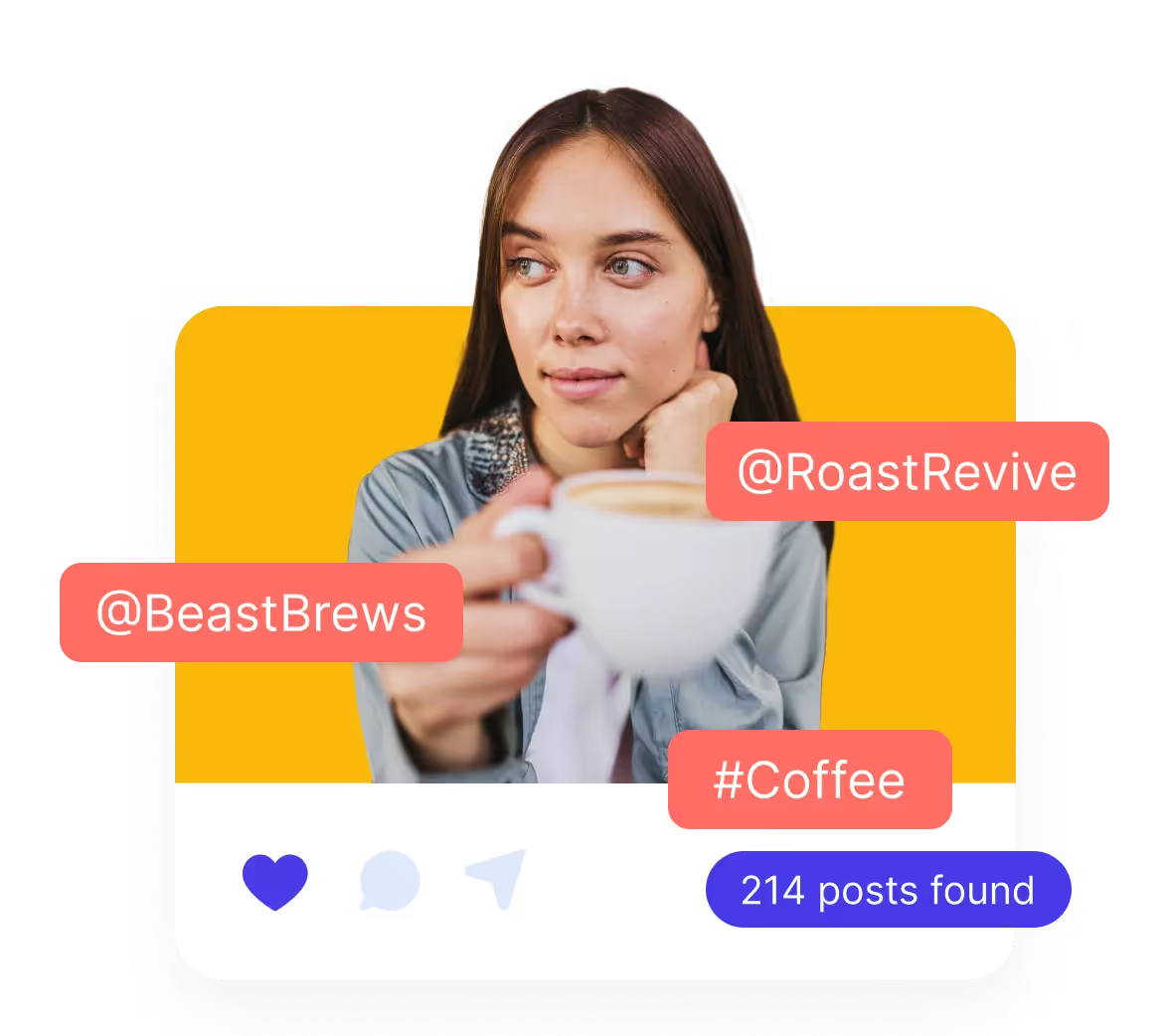
Brands can track the mentions of their competitors and understand what they’re doing correct and tap into the insights they gain from that data to stay ahead of them.
Custom Reports and Insights
If you’re a business that often deals with large datasets, then you must understand that simply getting the raw, unprocessed data isn’t the goal.
Developers can leverage the Facebook Listening API to create custom dashboards, reports, and analytics tools tailored to the specific needs of businesses.
This allows businesses to visualize and analyze Facebook data in ways that align with their North-star metrics, objectives, and KPIs.
Other than that, the API will also help you analyze other arbitrary variables that could be helpful in figuring out a bit more about the Facebook algorithm. That way, you could instruct the collaborators to post in a certain format, duration of the day or create content of a particular length. The better understanding you will have of the algorithm, the easier it would be for you to create content around that algorithm.
Allows for Integrations
Facebook Listening API also allows for integrations with various CRM tools, marketing automation platforms, and analytics tools which allows for easy extraction and translation of large datasets.
Not only does it saves a lot of time and efforts on the part of developers but it also allows them to leverage this data more effectively and relay it to the sales team in an easier, more readable fashion.
Benefits of Using Facebook Listening API
Analyze Trends and Campaigns
In the fast-paced world of social media, every day there’s a trend to win. Brands can always choose to make a statement via these trends across social media channels and platforms to better engage with their customers.
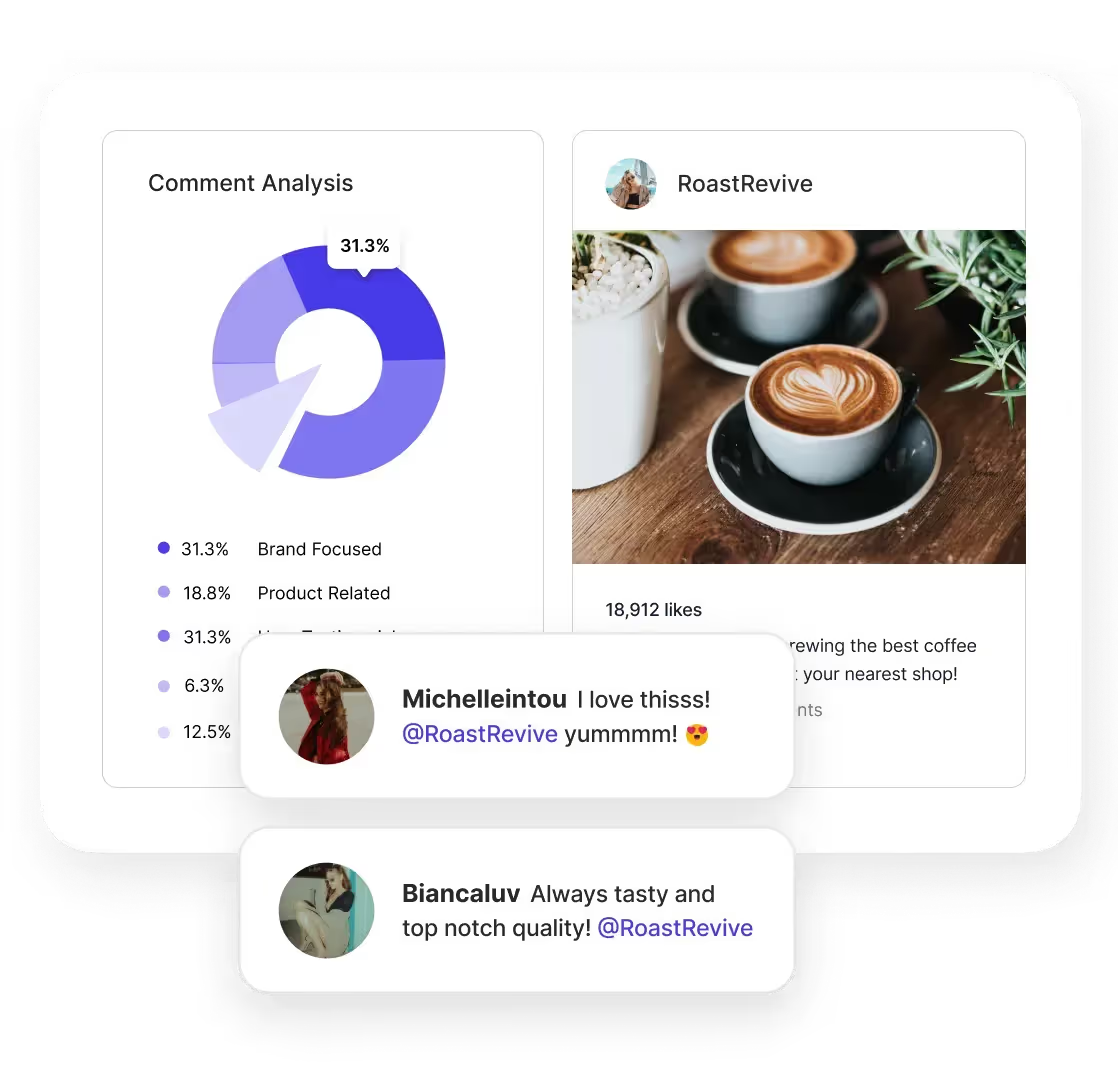
However, if you rely solely on word of mouth to catch the wind of any trend, that means you’re jumping on the bandwagon pretty late and thus, your content could either fall flat or not perform as well as you intended it to. Trending content works only when your timing is correct.
Social listening on Facebook can help you analyze trends and campaigns and that way you can stay on the top of industry trends and determine which social media campaigns can drive maximum brand traction.
Stay Ahead of Your Competition
“If you know the enemy and know yourself, you need not fear the result of a hundred battles. If you know yourself but not the enemy, for every victory gained you will also suffer a defeat. If you know neither the enemy nor yourself, you will succumb in every battle.”
- Sun Tzu, The Art of War
A powerful Facebook Listening API helps you track mentions of your brand, keywords, hashtags, and even competitors using advanced APIs, anywhere on any social channels that you're connected to.
Brand wars on social media are hilarious.
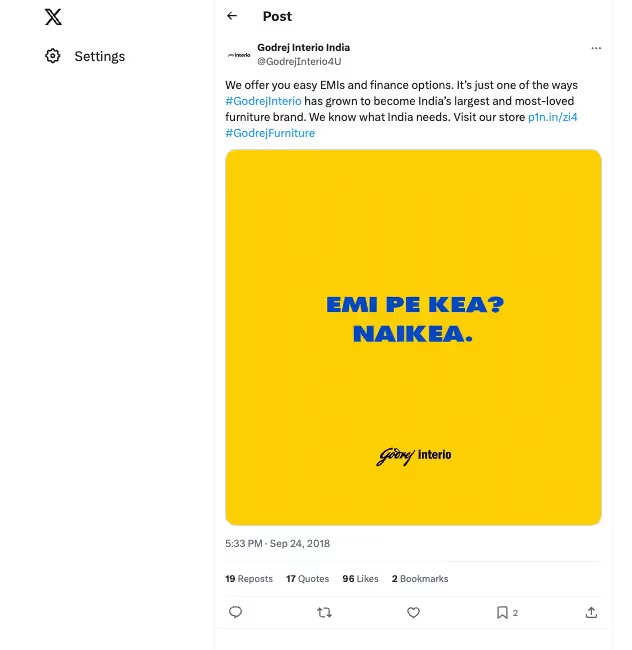
Engaging in quirky banter with your competitors has sometimes proven helpful in driving positive customer engagement. Everyone gets a laugh and its a win-win situation for everyone, encouraging a little bit of healthy competition.
Helps avoid PR Disasters
10 years ago, if people were agitated or frustrated due to a product or a service, they would dial the customer care helpline, wait on the line for 5 minutes and move on when they wouldn’t get any proper response.
But now, with the advent of social media, people take it straight to the masses. It can snowball into becoming a PR disaster for brands.
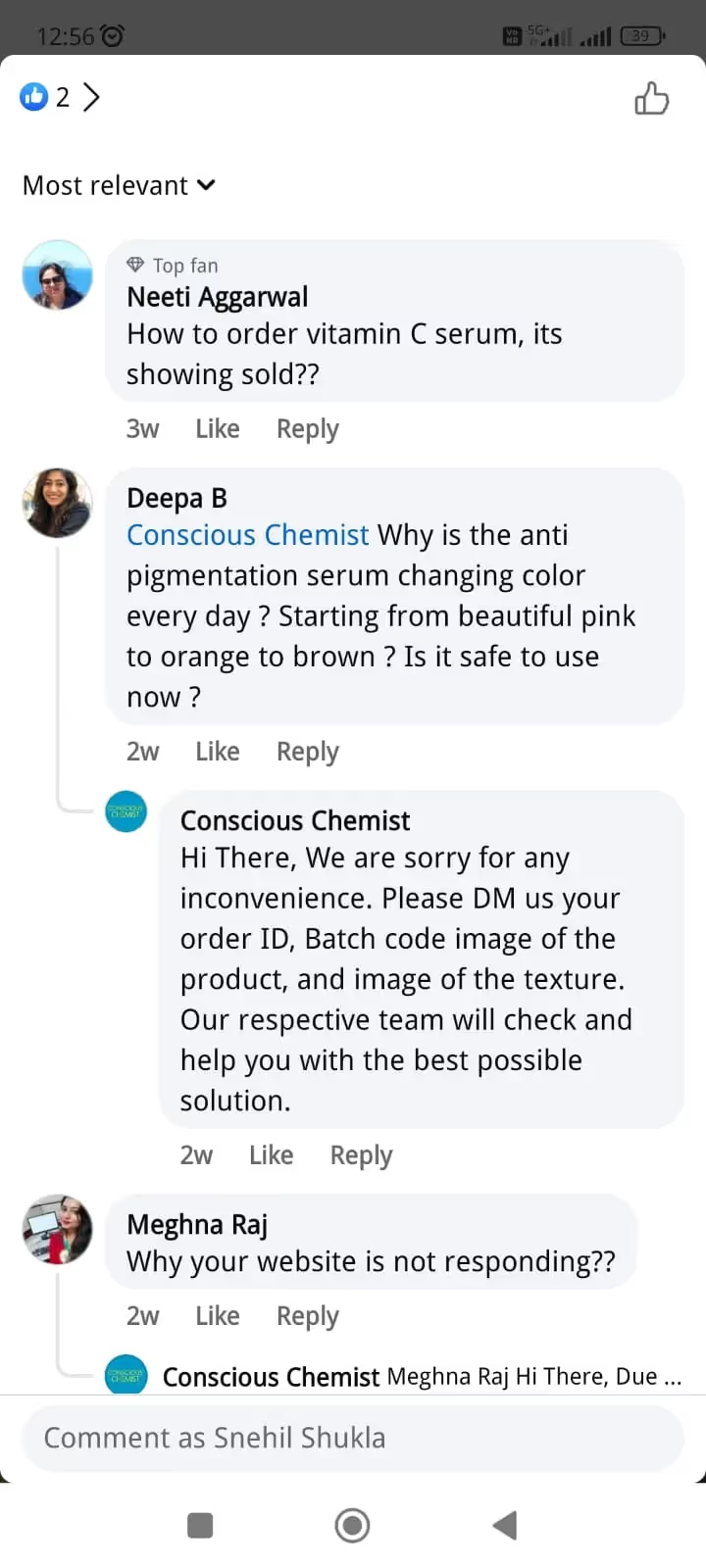
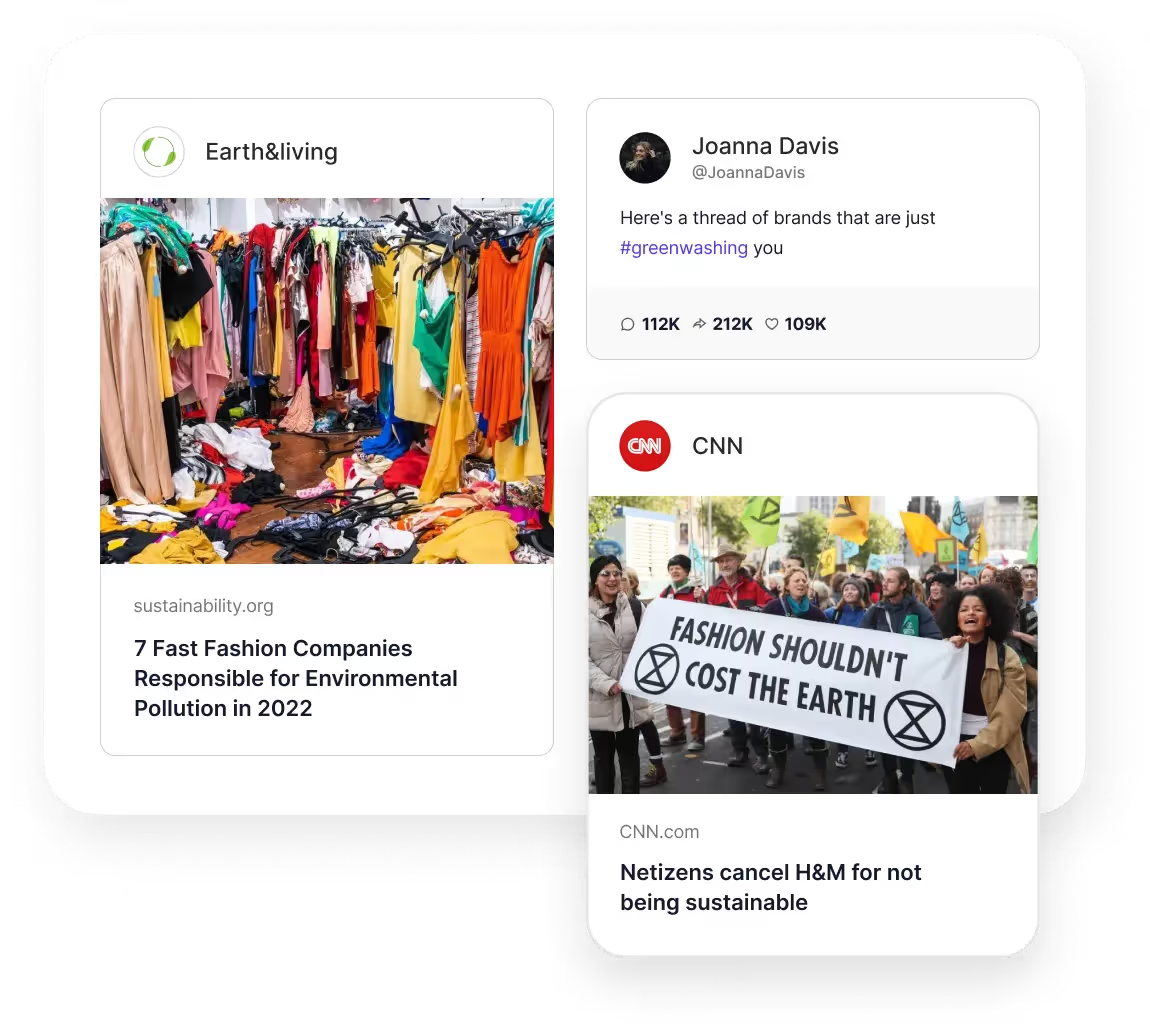
Facebook listening API will help you figure out the makings of these PR disasters and you can nip these complaints in the bud by promptly replying to the users before this even gets a chance to snowball into something bigger.
Innovative Market Research
Social Listening on Facebook can eventually lead you to a goldmine of insights that you probably never even asked for, to begin with. Social listening can prove to be a groundbreaking method of market research.
Instead of going through bulk of comments you’re receiving on n number of posts, a general sentiment analysis can help you understand which post you need to look for and what comments you need to go through.
It would be a good idea to concentrate your monitoring efforts on customer comments, service issues, and complaints if you utilize Facebook primarily as a customer care portal and your customers follow the suit.
Influencer Identification
Collaborating with the influencers to reach larger number of potential customers could be a great idea if you’re a budding start up or if you are targeting to boost your online presence, overnight. However, there has been a mushroom growth of influencers over the last few years and it is natural to wonder who’d be the best fir for your brand.
Finding the right influencer for your brand could be like finding a needle in the haystack.
But with social listening, you can actually identify the influencers who regularly post about the things that align well with your brand placement and also have a good traction rate on those posts.
It won’t just save your time and efforts on manual searching but will also guarantee the best brand fit.
Accessing and Integrating Facebook Listening API (9 Steps)
Let's walk through the steps to get you up and running:
Step 1: Create a Facebook Developer Account
The first step is to create a Facebook Developer Account.
This account gives you access to the Facebook developer tools and resources, including the Insights API. Head over to https://developers.facebook.com/ and sign up for ad account using your Facebook credentials.
Step 2: Register Your App
Once you have a developer account, you'll need to register your application. This process involves providing basic information about your app, with details such as its name, description, and category.
Step 3: Explore Facebook Graph API Explorer
The Facebook Graph API Explorer is a handy tool that allows you to experiment with the API and test different queries before integrating it into your code. This is a great way to familiarize yourself with the API's functionalities and explore the data you can access.
Step 4: Obtain Your App ID and App Secret
During the app registration process, you'll be provided with a unique App ID and App Secret. These credentials are essential for authenticating your application and accessing the Facebook Insights API. Store these credentials securely, as they grant access to your app's data.
Step 5: Choose Your Programming Language
The Facebook Insights API supports a variety of popular programming languages, including Python, PHP, JavaScript, and Java. Choose the language that best suits your development environment and skillset.
Step 6: Install Necessary SDKs (You can skip this)
Facebook offers Software Development Kits (SDKs) for various programming languages. These SDKs provide pre-built functionalities to simplify your interaction with the API. While not mandatory, SDKs can save you time and development effort.
Step 7: Make API Calls
Now comes the fun part! Once you have your credentials, choose your language, and (optionally) install the SDK, you can start making API calls to retrieve data. The specific code for making API calls will vary depending on your chosen language and the data you want to access. Here are some resources to get you started:
- Facebook Insights API Documentation: https://developers.facebook.com/docs/marketing-api/insights/
- Facebook Developer Tutorials: https://developers.facebook.com/
Step 8: Process and Analyze Data
The API returns data in JSON format. You'll need to use your programming language's tools to parse and interpret this data. Once you have the data in a usable format, you can start analyzing it to gain valuable insights into user behavior and app performance.
Step 9: Visualize Your Insights
Data is powerful, but raw numbers can be overwhelming. To make your insights more accessible and impactful, consider visualizing your data using charts, graphs, and custom dashboards below. This allows you to easily identify trends, patterns, and areas for improvement.
Remember: Security is paramount! Always follow Facebook's best practices for data security and user privacy when using the Insights API.
By following these steps, you'll be all set to access the Facebook Listening API.
However, there's more to the story! While the core API functionality is valuable, there are ways to streamline the process and enhance your development experience.
This is where Phyllo steps in!
While accessing and integrating Facebook Listening API within your tools or SDKs, make sure that you are adhering to Facebook's policies, terms of service, and data usage guidelines when accessing and using the Listening API.
Also Read: The Facebook Search API: A Developer's Guide to Targeting Users with Precision
How to Maximize Your Social Listening Strategy on Facebook
Implementing a social listening strategy on Facebook has to begin with setting a clear objective. What are your reasons? Why are you using a social listening strategy on the Facebook? What do you hope to gain from it?
Once you have set up the basic monitoring and are using the Insights API by Meta to better understand how your campaigns are working, you can set up more tools to deep dive into the raw, unprocessed data you’ll be extracting. Some of the few things you can do are:
Setup Sentiment Tracking
Some tools like Phyllo allow you to gauge the sentiment of your audiences by using the AI power to analyze the user generated comments under your posts.
That would save a lot of time on the part of your R&D Team. They wouldn’t have to sit through piles and piles of comments under your posts and you’d be getting the ground report and user feedback in almost real-time.
Custom Reports & Dashboards
Raw, unprocessed data can be further converted into reports and dashboards where you can visualize the metrics that are important to your vision & mission.
That way, it will be easier for you to share the data to the internal teams that will be the end-users of that data.
It will also help translate the data into more readable, understandable and presentable formats.
Brand Vigilance
You can also have a team monitor the real-time data to determine the presence of any negative user-generated content.
In such cases, talking to the users and resolving their issues can actually help you convert the bad publicity to a good name.
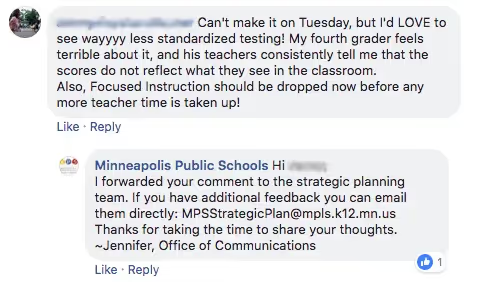
Campaign Analysis
You can also monitor the data that the API fetches to analyze the performance of your campaigns.
By tracking metrics like engagement (likes, comments, shares), reach, and sentiment around specific hashtags, keywords, and branded content, Campaign Analysis helps you pinpoint the campaigns that resonate most with your audience.
It will help you create more content around the more liked and popular topics and help you be a trendsetter in your domain.
Also Read: Facebook Analytics API: Developer guide on how to use the Analytics API
How Phyllo API Helps With Social Listening in Facebook
Phyllo Social Listening API is a tool that allows you to monitor conversations across major social media platforms to gather data and insights. Not only that, Phyllo APIs also offers a robust set of features to empower you with the state-of-art social media intelligence.
Here's a breakdown of its key features:
Social media coverage
Phyllo APIs will help you listen-in on conversations across various social platforms including YouTube, Instagram, TikTok, Facebook, Twitter, and LinkedIn.
Real-time data
Phyllo keeps you ahead of the curve with constant updates. You'll receive accurate social data as it happens, allowing for immediate responses to crises, engagement in trending social conversations throughout, and capitalizing on positive brand mentions.
Sentiment analysis
Phyllo tracks positive, negative and neutral mentions to understand audience sentiment and preferences. This allows you to understand how your audience feels about your brand, specific campaigns, or industry topics.
Campaign analysis
Identify your top performing campaigns and understand what's working well. Phyllo helps you measure the success of your own social media marketing and campaigns. You can identify your top performers based on metrics like engagement, reach, and sentiment. This allows you to:
- Double down: Allocate more resources to campaigns that are resonating with your audience.
- Refine or revamp: Identify aspects of underperforming campaigns that need improvement.
Actionable insights
Leverage trending topics and ideas to inform your product roadmap social media strategy and content strategy. By understanding sentiment, you can tailor your approach towards content creation. Positive sentiment indicates areas where you're succeeding, while negative sentiment allows for course correction and improved communication.
Customizable dashboards
Phyllo allows you to develop customizable dashboards for clutter-free analysis of audience sentiment with AI-powered insights.
Phyllo leverages AI to provide you with insights that go beyond raw data. This can include highlighting key themes relevant conversations, identifying influencers, and uncovering sentiment shifts.
Creator data access
Phyllo offers access to creator data, including post-login information and audience demographics. It can help you find creators who resonate with your target audience and gain insights into a creator's audience demographics and engagement levels.
Informed decision-making always saves your time, effort, and money.
Overall, Phyllo Social Listening API can be a valuable tool for brands and marketers to understand their brand perception, analyze campaigns, and gain insights from social media conversations.
Get Phyllo now to get a head-start on your competitors.
.avif)

.avif)







